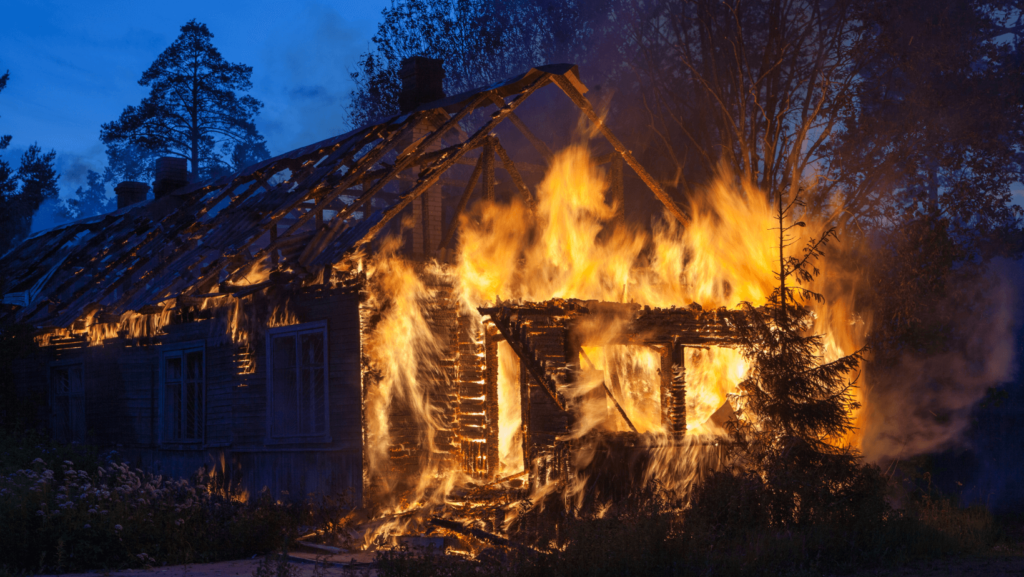There is a lot you can do, and some compelling reasons why you should take action to quell your nightmares, especially if you suffer from post-traumatic stress injury
Tom is awakened with a start by the sound of his own screams. Several nights a week in his dreams, he revisits the burning building, and hears terrified voices from inside, above the roar of the flames. The building has been deemed unsafe, he can only watch in frozen terror as the heavy beams start to fall and the building collapses. This is not an actual memory, but a condensation of all the times in his career as a firefighter that he arrived on the scene too late to save someone. Now, these memories haunt his dreams, and bring a deep sense of despair. What most people do not realize is that you do not need to simply suffer them; there is something you can do about nightmares.
Not all nightmares are a cause for concern
Nightmares plague almost all of us at different times in our lives. For the most part, this is not a problem, even though such dreams can be distressing. But if your nightmares cause significant distress, wreak havoc on sleep and adversely affect how you function during the day, it is really important to do something about your nightmares. About 5% of the general population and 30% of those with some form of mental illness fall into this category.
Researchers have established a clear link between nightmares and suicide, so if you have both suicidal thoughts and nightmares, you need to take action. Fortunately, what many people don’t realize is that there are many effective treatments for nightmares and they involve fairly simple steps. (If your therapist does not have training in nightmare treatment, some accessible online resources are listed below.)
Talking about your nightmares helps
Too few people talk about their nightmares; there is a tendency to think this wouldn’t help. Or that those you tell will judge you. Neither is true, and it really helps to talk about nightmares. Nadorff has studied nightmares extensively and concludes that “nightmares are a robust and modifiable predictor of increased suicidality and poor psychiatric outcomes” (2015, Journal of Clinical Sleep Medicine).
The good news is that nightmare treatment appears to work for many people. The research has raised many questions about what exactly is working and why, but it seems that almost anything that researchers have tried has the potential to make a difference. It may be that simply knowing nightmares can be treated opens the doorway to change.
Nightmare rescripting is the common denominator
There are many elements that have been incorporated into nightmare treatments. One of the most common is called nightmare rescripting. This is simply the process of coming up with a new ending to your nightmare. In the well-researched treatment modality called Imagery Rehearsal Therapy, people are asked to change their nightmare in any way they want, and then to imagine this new version a number of times before going to sleep. The research has shown this to be very helpful for many kinds of nightmare sufferers, from veterans to rape victims.
There are many variations on this treatment, and all appear to be helpful. I found in my practice that teaching clients to imagine a new ending to their nightmares is something they can do on their own, at home right when they wake up from a frightening dream. This gives them a constructive action to take, a way of calming down. They tell me it gives them a sense of control over their distressing dreams and takes away some of the fear of going to sleep. What is also good about such nightmare treatments is that they can not only help reduce nightmare frequency and distress, but they also reduce daytime symptoms of posttraumatic stress injury – things like flashbacks and a tendency to avoid situations that can trigger them. The other good news about most of the nightmare treatments studies is that treatment is quick, can make a difference in a session or two, and even if doesn’t help as much as you would like, the studies reported few if any adverse effects.
What to do when you wake up from a nightmare
When you are jolted out of sleep by a nightmare, your body will likely be quite amped up. So take a few minutes to let your heart rate and breathing slow down. Remind yourself gently that this was just a dream, and that it is not happening now, real as it may have seemed a few moments ago. Take a few long, deep breaths, extending the exhale to calm your nervous system. Calm your emotions by picturing in detail one of your favorite places or imagining someone you love deeply and amplifying the feelings you have about them. Look around the room for something comforting and to remind yourself you are safe in your bedroom, not back in the dream.
Once you feel calmer and better, go back to your nightmare images, just the very last part of the dream that woke you up, and allow the dream to play forward from there in any way you want. It does not have to come to a tidy resolution, although it might. Just let the dream play forward to find a better stopping place. Keep your breath slow and regular. What most people find is that this simple practice changes the dream for the better and gives the dreamer a greater sense of control and safety.
Nightmare changes can indicate trauma recovery
When I have treated patients with nightmares in a similar way to what is described above, I found that all of them experienced some kinds of changes in their dream life. Sometimes the nightmares stop altogether, but more commonly, they begin to change and start to look more like normal dreams – they are a bit stranger, more a of mix of past and present, and less of a direct replay of a trauma memory. This is an indication that the process of healing has begun.
When a traumatic event has not been metabolized, it can come back in the form of recurrent dreams that either represent or replicate the actual trauma event. The more the dreams of the trauma begin to weave in elements from current life, the closer the dreamer is to having integrated their trauma. The nightmares may not stop right away, but if they shift and start to feel more like normal dreams rather than repeated replays, this is a good sign.
Resist the urge to avoid treating nightmares
Both therapists and those who suffer from nightmares might be tempted to back away from conversations about their alarming content. But if you are suffering from the same kinds of terrifying dreams most nights, it is a mistake to think not talking about it will help in some way. It does not. Talking about it helps, even when the subject matter is intense.
Philosopher Eugene Gendlin said it this way: “What is true is already so. Owning up to it doesn’t make it worse. Not being open about it doesn’t make it go away… People can stand what is true for they are already enduring it.”
Current research has shown that even with the most unbearable trauma, such as those who were inmates of Auschwitz, it is better for survivors to talk about their dreams than try to bury them. A Polish researcher, Wojciech Owczarski, studied 500 dreams of 127 former inmates and found that only 10 percent are still suffering from recurrent dreams that replicate their trauma. He found that all the dreams had “therapeutic potential” either on their own or with the help of a therapist.
To wrap up, there are many reasons to talk about your nightmares, to rescript them, and to seek treatment if they cause you significant distress. These challenging dreams can be seen as your own body’s attempt to integrate the trauma you have suffered, but to realize this helpful effect, you must work with the dreams rather than avoiding them.
As a small gift to those who suffer from nightmares, I have made a free 7-minute self help video, dedicated to first responders and front-line workers. For those clinicians who want more information on treating nightmares, consider taking my online course: Nightmare Treatment Imperative.



